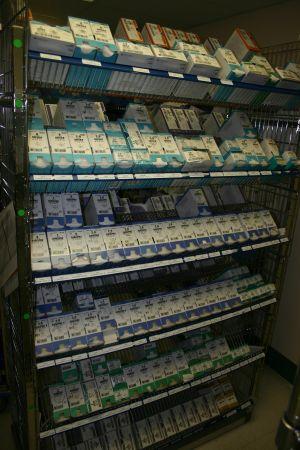Inventory Optimization

Job descriptions for Supply Chain Leaders almost universally include responsibility for management of all supply inventories, which by default, includes reorder points, safety stock levels, reorder quantities, and many other details for each inventory item, for each inventory location. While this responsibility is usually delegated to staff in the distribution or procurement function, such staff seldom have time (or focus) to conduct an "end to end" review of these values. And even if they do, few staff are trained in the "art AND science" of inventory management.
Unfortunately, when an inventory stock-out occurs, someone MAY ask whether these values are right for the item. More commonly, the questions don't even get asked when it is clear that the current reorder point/reorder quantity/par level values are not working. Instead, staff simply order more, in the hope that they will not likely run out of that item again. The problem is that without incorporating both art and science in inventory management, each item is a ticking time bomb, just waiting for its time to run out of stock.
Ideally, inventory parameters should be review and updated on a routine basis, along the lines of:
- At least annually for ALL inventory items
- Updated review whenever an item runs out of stock
- Monthly review of, as an example, the Top 10 items in the Top 25 inventory locations (e.g. items that account for 50-80% of inventory value).
To conduct such comprehensive reviews, we have to add automated tools to the review process. The automated tools take actual daily usage and cost data for each item, and evaluate minimum usage, maximum usage, average usage, and apply more sophisticated algorithms to provide "recommended" reorder points, reorder quantities, par levels, etc. These recommended values should then be reviewed by staff who have knowledge and training in the "art and science" of inventory management (vs. knee jerk reaction), to determine if there are recommended values that will not work, based upon space limitations, knowledge of upcoming product changes, etc. As a generality, no more than 20% of recommended parameters should be overridden.
Once the review has been conducted, and necessary recommended values have been over-ridden, the final values should be uploaded into the ERP application and put into use.
While it is a significant investment of time to undertake periodic scientific review and updates for thousands of inventory items, this is really the responsibility of inventory managers, and the effort will payback handsomely through reduced stock-outs, increased customer service, fewer crises, and minimized inventory investment.
We offer education and tools to make comprehensive inventory reviews easier and more targeted to those items where updated parameters will quickly result in fewer stock-outs and reduced excess/non-moving inventory.
Coming soon: We will offer online inventory calculators, allowing input of information in a web-based application, which will then calculate updated inventory parameters to be entered into your ERP application. Once you see the methodology, and gain confidence of its value, we offer tools for batch inventory review and capabilities for exporting your current inventory data, calculations of recommended parameters using an Excel worksheet, allowing review and over-riding as needed, at which time changes may be uploaded into your ERP application.
We look forward to hearing your feedback.
